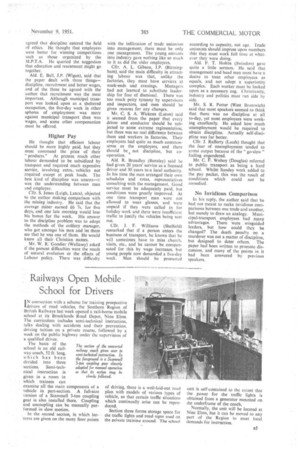Railways Open Mobile. School for Drivers
Page 39

If you've noticed an error in this article please click here to report it so we can fix it.
I N connection with a scheme for training prospective
drivers of road vehicles, the Southern Region of British Railways last week opened a rail-borne mobile school at its Brooklands Road Depot, Nine Elms. The curriculum includes semi-technical instruction, talks dealing with accidents and their prevention, driving tuition. on a private course, followed by a week on the public highway under the supervision of a qualified driver.
The basis of the school is an old railway coach, 52 ft: long, which has been divided into three sections. Semi-technical instruction is given in a room in which trainees can
examine all the main components of a vehicle in part-section. A full-size version of a Scammell 3-ton coupling gear is also installed there. Coupling and uncoupling can be manually performed in slow, motion.
In the second section, in which lee*tures are given on the many finer points
The section of the converted railway coach given over to semi-technical instruction. In the foreground is a Scanunell 3-ton coupling gear cleverly adapted for manual operation so that its action may be closely followed.
of driving, there is a well-laid-out road plan with models of various types of vehicle, so that certain traffic situations which continually arise can be reproduced.
Section three forms storage space for the traffic lights and road signs used on the private train Inc eround. The school self-contained to the extent that power for the traffic lights is obtained from a generator mounted on the underframe of the coach.
Normally, the unit will be located at Nine Elms, but it can be moved to any part of the Region to meet local demands for instruction. unit the is




















































































